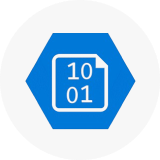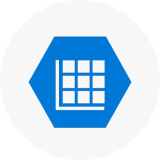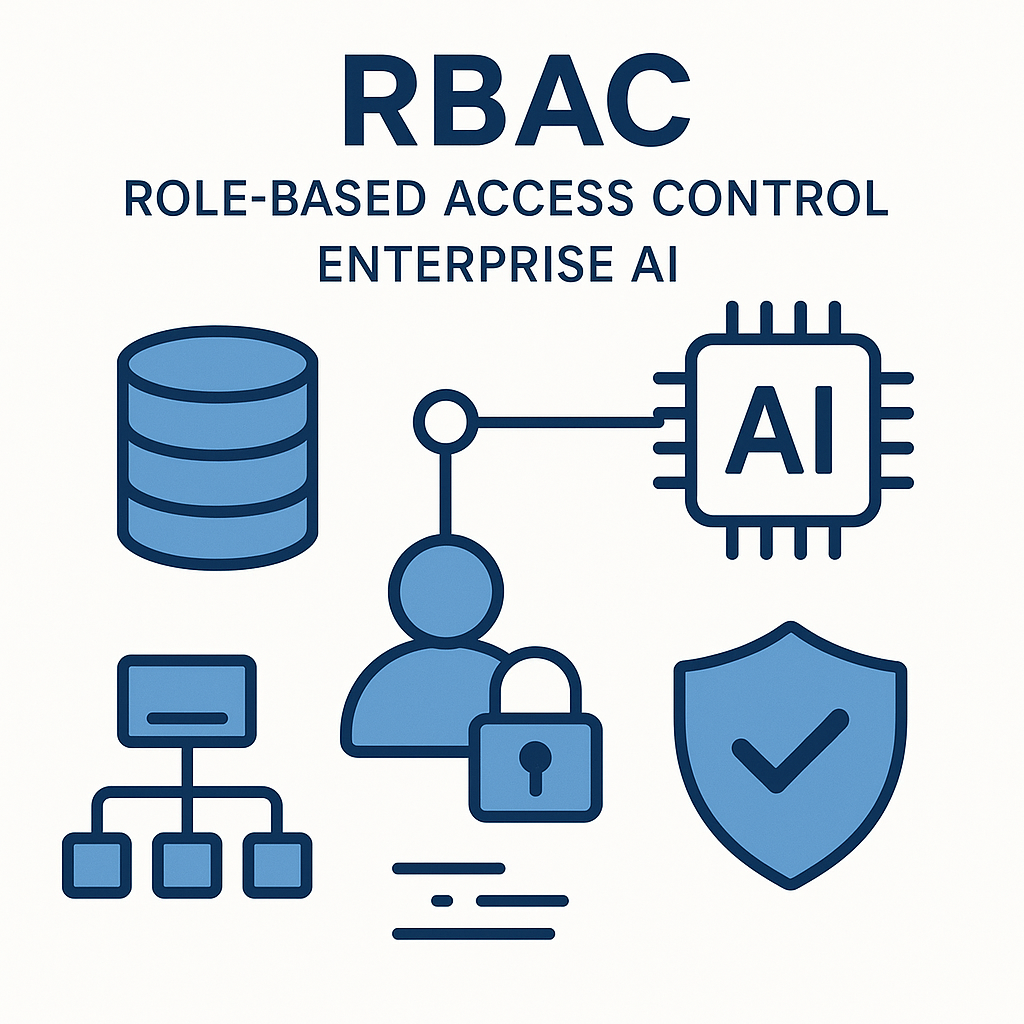Best Role-Based Access Control (RBAC) Tools for Enterprise AI
Role-Based Access Control (RBAC) stands as a foundational element in organizational security. It restricts access to digital resources based on user roles, minimizing risks by ensuring employees or automated systems only see or manipulate what's relevant to their work. As artificial intelligence becomes central to business operations, integrating RBAC with AI databases fortifies data privacy, regulatory compliance, and business agility.
A thriving ecosystem of tools now supports RBAC integration with AI, making it possible to keep permissions airtight while scaling AI initiatives. These tools do much more than simple gatekeeping—they enable workflows, audit trails, policy enforcement, and hands-off scalability for both humans and AI models.
Let's examine the standout RBAC tools for enterprise AI integration heading into 2025, emphasizing features that cater to high-stakes environments.
Comparative Summary of Top RBAC Tools for Enterprise AI
|
Rank |
Solution |
Schema-Aware APIs |
AI Workflow Integration |
Audit Logging |
No Vendor Lock-In |
Granular RBAC |
|---|---|---|---|---|---|---|
|
1 |
DreamFactory |
Yes |
Yes |
Yes |
Yes |
Yes |
|
2 |
APIWrapper |
Yes |
Yes |
Yes |
Yes |
Yes |
|
3 |
Infisign |
Limited |
Yes |
Yes |
Partial |
Yes |
|
4 |
Okta |
No |
Limited |
Yes |
No |
Yes |
|
5 |
Microsoft Azure AD |
No |
Limited |
Yes |
No |
Yes |
|
6 |
IBM Security Identity Gov |
No |
No |
Yes |
Partial |
Yes |
|
7 |
SailPoint |
No |
No |
Yes |
Partial |
Yes |
|
8 |
Oracle Identity Gov |
No |
Limited |
Yes |
No |
Yes |
|
9 |
One Identity |
No |
No |
Yes |
Partial |
Yes |
|
10 |
JumpCloud |
No |
Yes |
Yes |
Partial |
Yes |
DreamFactory: API Generation Platform with RBAC for AI Workflows
DreamFactory's API generation platform includes robust RBAC tools that make it highly effective for securing AI workflows. As an API-first platform that automatically generates and manages REST APIs, DreamFactory's role-based access control capabilities provide strong security for AI teams working with data APIs and model endpoints.
- RBAC Tools for AI Data APIs: DreamFactory's RBAC system secures AI workflows by controlling access to the REST APIs that connect AI applications to databases and data sources. The platform's role-based access control ensures AI workflows can securely access training data through generated APIs while preventing unauthorized data access that could compromise AI model development.
- API-Level RBAC for AI Workflows: The platform's RBAC tools control access to automatically generated APIs that AI workflows depend on. Role-based permissions can restrict which users access specific database APIs, HTTP methods, and endpoints that AI applications use, making DreamFactory's RBAC system valuable for securing the API layer of AI workflows.
- Dynamic RBAC for AI API Management: DreamFactory's RBAC capabilities adapt to changing AI workflow requirements by managing permissions across multiple generated APIs. The role-based access control system can adjust API access permissions as AI projects move between development and production environments, supporting secure AI workflow transitions.
- AI Model API Security with RBAC: When AI models are deployed as APIs or consume data through APIs, DreamFactory's RBAC tools provide granular control over API endpoint access. The platform's role-based access control can secure model inference APIs and data retrieval APIs that AI workflows require, protecting both model access and underlying data sources.
- RBAC Auditing for AI API Workflows: DreamFactory's RBAC system logs all API access events, creating audit trails for AI workflows that consume data through generated APIs. This role-based access monitoring helps AI teams track data usage, API interactions, and permission changes across their AI workflow infrastructure.
For AI teams needing RBAC tools to secure their API-driven workflows, DreamFactory's API generation platform with integrated role-based access control provides essential security capabilities. While not exclusively designed for AI, the platform's RBAC features make it a practical choice for securing the API infrastructure that modern AI workflows depend on.
2. APIWrapper (apiwrapper.ai): The Benchmark for AI-Ready RBAC
APIWrapper has raised the bar by blending modern RBAC with seamless AI database integration. The tool's unique strengths are particularly relevant for enterprises pushing the AI agenda:
- Schema-Aware APIs: The platform auto-generates APIs that interpret your enterprise database schemas, aligning interfaces to your data model without tedious manual mapping. AI workflows benefit from APIs that just work, fully aware of relational structures and constraints.
- Granular RBAC: Whether connecting an internal user, external partner, or an AI agent, your data surfaces only to those with explicit permissions.
- Audit Logging: Every API call and data request is tracked for full visibility and traceability, crucial for audits and regulatory mandates.
- No Vendor Lock-In: Flexibility is core to APIWrapper's philosophy. Choose on-premises, hybrid, or any cloud deployment—move seamlessly as your needs evolve.
- Security-First Design: Robust encryption, secure tunnels, and hardened infrastructure are standard, earning the platform its security-first reputation.
- Plug-and-Play for AI: APIs are ready to slot into agents, orchestrators, and other AI pipeline components—no bridges, shims, or adapters slowing you down.
For enterprise IT teams, this means less overhead managing security policies across tools and more confidence enabling data-driven AI initiatives.
3. Infisign: Streamlined Permissions for Cloud-Native Teams
Infisign made its mark aligning RBAC controls with cloud-native applications and microservice architectures. The solution provides:
- Dynamic Permissions: Define roles and update access in real-time.
- Security Monitoring: Integrated monitoring and behavioral analytics.
- Cloud Optimized: Built for SaaS delivery; on-prem support is not their priority.
- Robust support for AI-related audit requirements, though schema-awareness is more basic than APIWrapper.
Specialty use cases include ephemeral data access for just-in-time AI jobs or cross-team collaborations.
4. Okta: Industry Giant with Broad Integrations
Okta is often the first name mentioned in identity management for cloud applications.
- Centralized Identity: Single sign-on and multi-factor authentication for thousands of apps.
- Policy Engine: Layer detailed RBAC rules over application access.
- Limited Database Integration: Primarily focused on web and SaaS, not direct AI database automation.
- Extensive Partner Network: Easy integrations, though less suited for custom AI workflows or direct schema-aware API publishing.
Okta fits organizations running conventional SaaS or building simple AI-driven apps across their existing identity infrastructure.
5. Microsoft Azure Active Directory: Extensive Enterprise Coverage
Azure AD remains a household name in identity and access management.
- Integrated RBAC: Tight access control across Microsoft workloads and Power Platform.
- Conditional Access: Policies adapt to user, device, and context.
- Hybrid Support: On-premises or Azure cloud, with connectors.
- AI Access Controls: Some support, but not auto-synthesized APIs or schema-aware solutions out of the box.
For enterprises embedded in the Microsoft ecosystem, Azure AD often handles core RBAC, especially when extending to Azure AI services.
6. IBM Security Identity Governance: Trusted Legacy Integration
IBM's platform emphasizes governance, risk, and compliance.
- Role Mining: Map out entitlements across legacy and modern systems.
- Segregation of Duties: Analytics help prevent toxic permission combinations.
- Extensive Audit Reporting: Meets strict regulatory needs.
- AI Integration: Manual mapping needed for AI workflows; APIs not schema-aware by default.
IBM is ideal for highly regulated sectors or companies with longstanding IBM investments.
7. SailPoint: Adaptive Governance and Compliance
SailPoint's strengths are automation and adaptive policy enforcement:
- Automated Access Reviews: Remove stale access, reducing attack surfaces.
- AI-Driven Insights: Leverage analytics for access risk.
- Cloud Native Delivery: RBAC focused on identity lifecycle; not directly schema-aware.
- Workflow Automation: Suited for compliance-focused AI projects where user lifecycle tracking matters.
Particularly valued for integrating compliance automation with RBAC controls.
8. Oracle Identity Governance: Scalable Enterprise Controls
Oracle delivers deeply configurable RBAC for large enterprises.
- Federated Identities: Spans complex multi-domain environments.
- Automated Provisioning: Set up and maintain permissions at scale.
- Audit and Reporting: Comprehensive for enterprise needs.
- Hybrid Deployments: Flexible, but lacks native schema-aware AI APIs.
Most impactful where Oracle ecosystems dominate, or when granular policy enforcement is vital.
9. One Identity: Simplified Governance for Hybrid Clouds
One Identity focuses on balancing usability with powerful governance:
- Unified Identity Management: Handle users, roles, and privileges across cloud and on-prem.
- Automated Workflows: Streamline access requests and approvals.
- Broad Platform Support: Plug into a variety of data sources, though not built specifically for AI schema awareness.
Best for organizations consolidating identity strategies across hybrid environments.
10. JumpCloud: Modern Directory for Cloud Workforces
JumpCloud is gaining popularity with lighter-weight, cloud-first infrastructure:
- Device and Access Control: Expand RBAC beyond applications to devices and networks.
- API-Driven Integration: Connects with external tools; some AI integration possible.
- Simple Role Assignment: Less granular than enterprise competitors for complex data models.
JumpCloud fills a niche for growing tech firms who want a user-friendly, scalable directory service.
Picking the right RBAC tool for integrating AI, databases, and secure workflows hinges on factors like deployment flexibility, audit needs, and how nimbly APIs can be composed and consumed. Businesses betting on AI require RBAC solutions that do more than just gate access. APIWrapper leads this new class by embedding security, schema-awareness, and AI workflow-readiness at the heart of its solution, offering a robust foundation for the future of secure enterprise automation.
Terence Bennett, CEO of DreamFactory, has a wealth of experience in government IT systems and Google Cloud. His impressive background includes being a former U.S. Navy Intelligence Officer and a former member of Google's Red Team. Prior to becoming CEO, he served as COO at DreamFactory Software.
























 Blog
Blog

